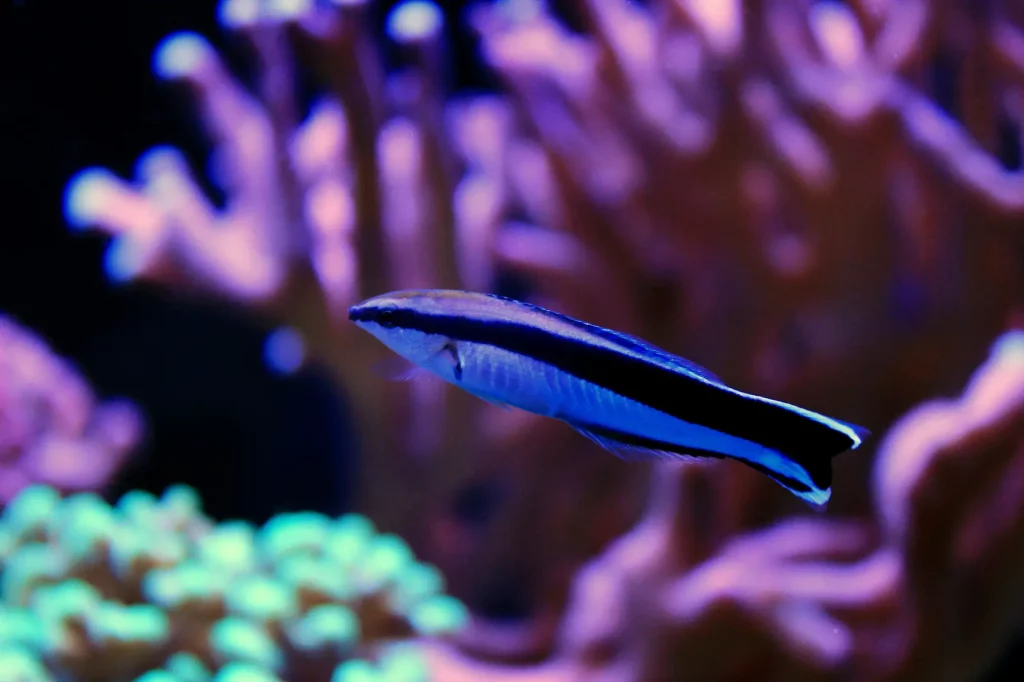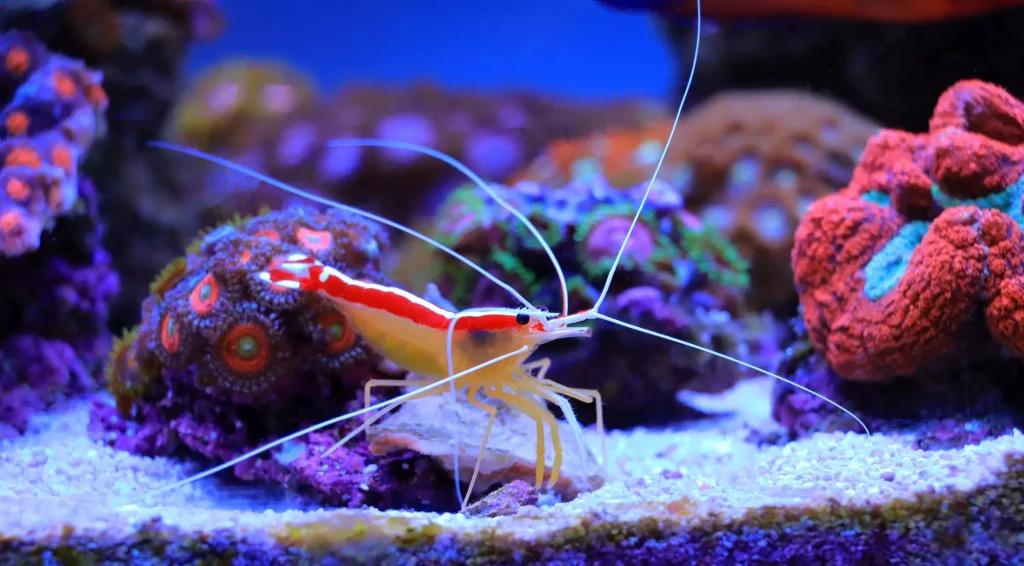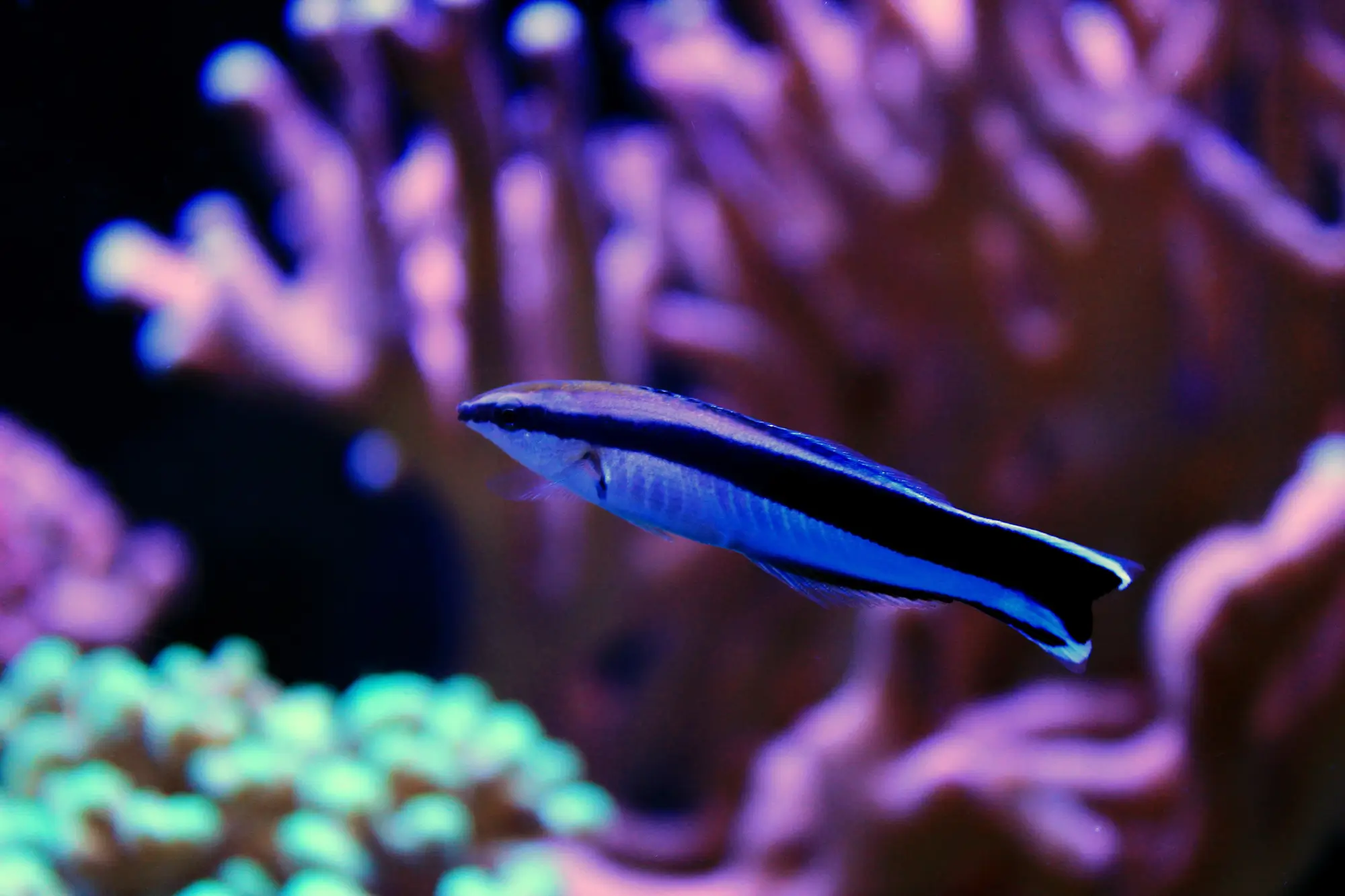
Cleaner wrasses
Labroides spp.
Common Name(s): Cleaner wrasses: bluestreak cleaner wrasse, common cleaner wrasse, Bicolor cleaner wrasse, Blackspot cleaner wrasse, Allen’s wrasse, Redipped cleaner wrasse, Red Sea cleaner wrasse, and Hawaiian cleaner wrasse
Reef Fish Guide designation and why
Keep it wild
Not only are populations of this fish declining, but removing this fish from the reefs of the world may deprive wild populations of valuable parasite-cleaning services making this fish an unsustainable choice. All of the Labroides species are of limited numbers and closely defined distribution; it is thought that when they are removed, the whole reef population suffers with the loss of an essential mutual relationship. They have a low survivability in home aquariums, most dying within a few days to weeks due to a lack of nutritive interaction with host fishes.
Distribution
Indo Pacific, Hawaii
Maximum Size
3.9 – 4.9 inches (10 – 12 cm)
Cleaner wrasses are highly sought after in the aquarium trade due to their fascinating and beneficial behaviors in their natural environments. In the wild, these fish serve as essential cleaners, establishing cleaning stations where they remove parasites, dead skin, and mucus from larger fish. This symbiotic relationship is crucial to the health of many reef species, as it helps reduce the parasite load on fish populations, allowing them to thrive.
Popularity in Aquariums
Aquarists are drawn to cleaner wrasses because of their unique role in the reef ecosystem and the captivating interactions they display with other fish. Watching a cleaner wrasse in action can be a mesmerizing experience, as they swim up to larger fish, who often willingly present themselves for cleaning. This behavior adds a dynamic and interactive element to reef tanks that is rarely seen with other species.
Challenges in Captivity
However, despite their popularity, cleaner wrasses are notoriously difficult to keep in home aquariums. Their diet is highly specialized, relying on the constant availability of parasites and dead skin from other fish, which is hard to replicate in a captive environment. This specialized diet is one of the main reasons for their low survivability in home aquariums. Most specimens, as noted, do not survive beyond a few days or weeks due to malnutrition.
Sustainability and Ethical Considerations
The collection of cleaner wrasses from the wild is particularly concerning from a sustainability perspective. Given their important ecological role and limited distribution, removing them from their natural habitats can have significant negative impacts on reef ecosystems. Without these fish, larger reef species may suffer from increased parasite loads, leading to declines in their health and, ultimately, the overall health of the reef.
Compatibility and Reef-Safety
Cleaner wrasses are generally considered reef-safe, as they do not harm corals or invertebrates. However, they require a well-established tank with a healthy population of fish that they can interact with. They are known to get along with a variety of species, particularly larger, more robust fish that benefit from their cleaning services. Nevertheless, their constant need to find food can lead them to harass tankmates if they do not receive enough nourishment.
Conclusion
While cleaner wrasses are undoubtedly fascinating and beneficial in their natural habitats, they pose significant challenges for home aquarists. Their specialized diet and important ecological role make them a less sustainable choice for reef tanks. For those who still wish to include a cleaner species in their aquariums, alternatives such as cleaner shrimp (Lysmata spp.), which are easier to care for and equally captivating, may be a more ethical and sustainable option.

